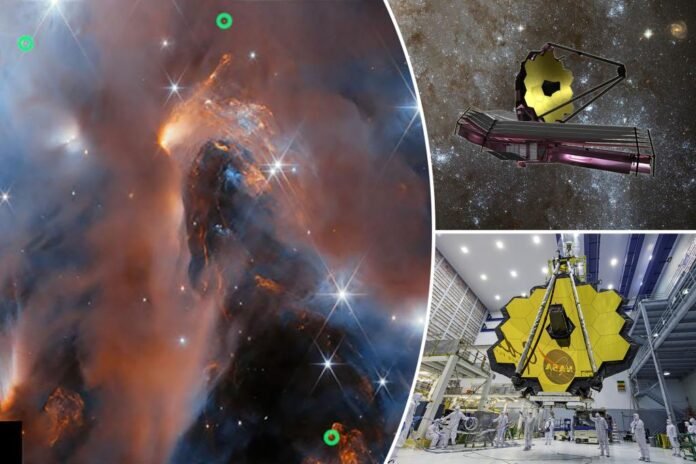They may be able to’t all be stars.
Researchers using the James Webb Telescope have found out six isolated “rogue” worlds that can have atypical origins.
What’s unusual is that not one of the planet-sized our bodies, all between 5 and 15 instances Jupiter’s cluster, orbit a celebrity, because the Earth does to the solar.
A Johns Hopkins College staff is attracted to the prospective that those had been in truth brown dwarfs, the astronomic time period for failed stars.
“If you have an object that looks like a young Jupiter, is it possible that it could have become a star under the right conditions?” mentioned govern learn about writer Adam Langeveld.
The “celestial entities” — discovered within the nebula NGC1333 inside of the Persues constellation 960 light years away — perhaps shaped from the failed stars’ fall down of gasses and dirt, reported New Scientist magazine.
The Eu Length Company recently released unused pictures of the area.
The planetary scientists had been stunned that not anything there embodied a cluster underneath what could be 5 instances the scale of Jupiter.
“In some ways, what’s most striking is what we didn’t find,” researcher Ray Jayawardhana advised the opening of the invention, now published in “The Astronomical Journal.”
It may well be an remarkable difference that brown dwarfs can’t method from anything else relatively lighter — as it’s, the invention equated to just about 10% of NGC1333’s cluster.
“Our observations confirm that nature produces planetary mass objects in at least two different ways,” Jayawardhana said in a release. “From the contraction of a cloud of gas and dust, the way stars form, and in disks of gas and dust around young stars, as Jupiter in our own solar system did.”
And, of the six unique exoplanets, one stands proud particularly.
It was once seen to game an orbital ring of mud related to 1 that created a perimeter round our personal sun machine billions of years in the past throughout its formation.
“Those tiny objects with masses comparable to giant planets may themselves be able to form their own planets,” added co-author Aleks Scholz.
“This might be a nursery of a miniature planetary system on a scale much smaller than our solar system.”


